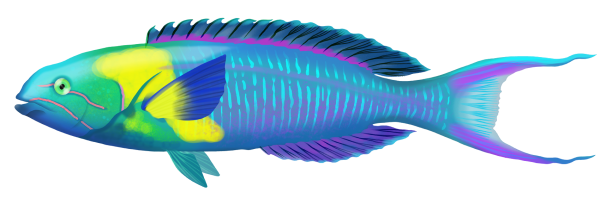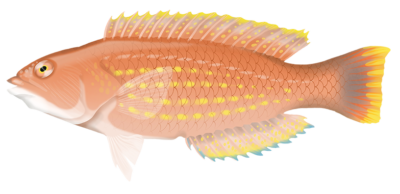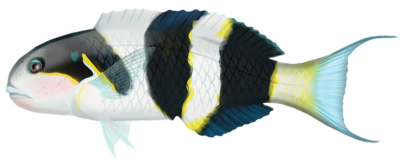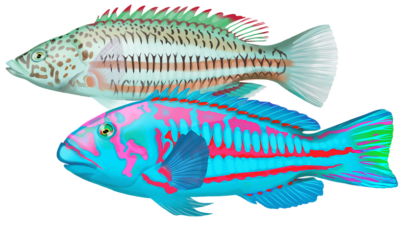Quick Facts
Distribution
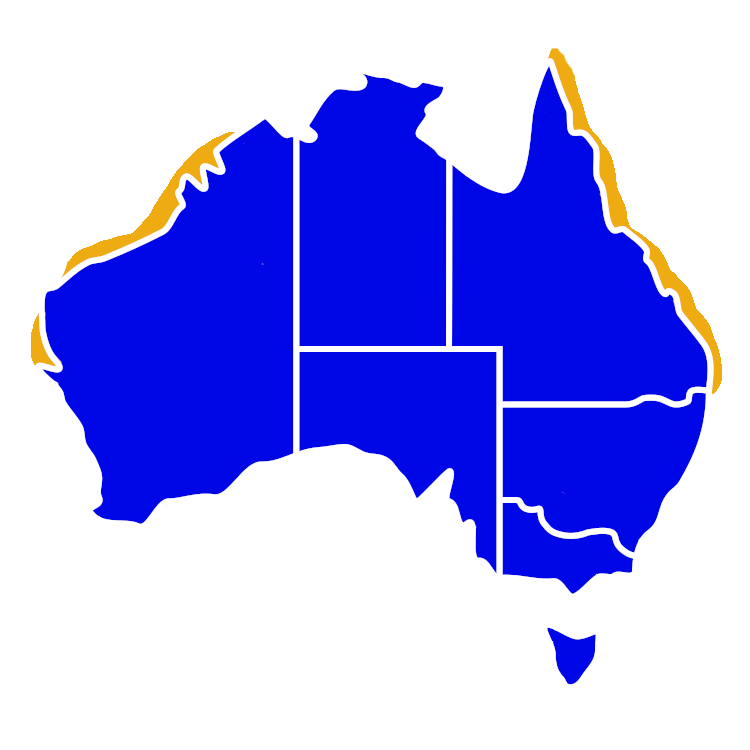
Interesting Info
- The bluehead wrasse, is a species of wrasse found in Australia. They are commonly found in the Great Barrier Reef, as well as other reefs and rocky areas along the western, eastern and southern coasts of Australia.
- They are known for their distinctive coloration, which includes a bright blue head and throat, and a greenish-yellow body with pinkish-red spots. Males are larger than females and have a more intense blue coloration on their head and throat.
- Bluehead wrasses feed on small invertebrates and crustaceans, as well as algae and other plant matter.
- They are active during the day and typically rest at night in small crevices or holes in the reef. In addition, they are often found in small groups or pairs, and males will defend their territory from other males.
- They are known to exhibit a behaviour called “cleaning symbiosis,” where they will remove parasites from the skin of larger fish in exchange for protection.
- Male bluehead wrasses establish a territory on the reef and attract a group of females. During courtship, the male performs a display to attract the female, and they spawn together with the female releasing her eggs and the male fertilising them externally. After spawning, the male protects the eggs until they hatch, which takes a few days.
- The estimated lifespan is between 5 – 7 years in the wild.
Species Interaction
Aquarium, Snorkeling & Diving
The bluehead wrasse is a popular species for marine aquariums due to their striking coloration and active behaviour. This also makes them a reef favourite for snorkelers and divers.
Scientific Classification
Kingdom: Animalia
Phylum: Chordata
Class: Actinopterygii
Order: Perciformes
Family: Labridae
Genus: Thalassoma
Species: Thalassoma Amblycephalum
Conservation Status
The conservation status of the bluehead wrasse in Australia is currently listed as “Least Concern” by the International Union for Conservation of Nature (IUCN). This means that the species is not considered to be at significant risk of extinction or population decline in the foreseeable future.
Bluehead Wrasse
As Aquarium Fish
Care Level: Moderate to difficult
Temperament: Semi-Aggressive
Diet: Omnivore
Reef Compatible: Yes
Minimum Tank Size: 80 gallons
Recreational Viewing
- Snorkeling & Scuba
Finding: Easy
Temperament: Semi-Aggressive
Location: Inner Reef, Outer Reef, Lagoon
Danger: None


